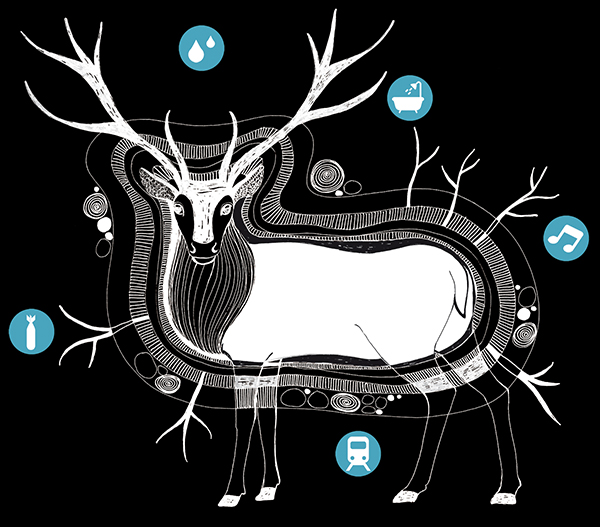Do not look at me with those bulging eyes, for I too am of pure Milanese blood, and by now I have learned from you life and miracles.
How very many I've heard and learned over the years, while I slowly dug the road below the houses, where over the centuries, through the mud, stones, earth and ancient ruins, through the tangle of pipes, beams, cables, wires, conduits and sewers, there drained and settled your most jealous and bitter secrets.
Dino Buzzati
the Metro
In 1863 the London Underground opened, the oldest underground railway in history. It was a little more than a century later that the first line of the Milan Metro began operating.
At its inauguration, line 1 ( "the red line") comprised 21 stations and a route of 12.5 kilometers. Work began in 1957 using the "cut and cover" method (or "Milano" method), which involves the construction of open-air galleries.
Credit for the architectural design and the signage is due, respectively, to the architects Franco Albini and Franca Helg and designer Bob Noorda, all of whom received the Compasso d'Oro award in the same year.
The quote from Buzzati comes from an article published in the Corriere della Sera on November 1, 1964, the day the Metro began running. Also in 1964, the same newspaper published in serial form a story by Buzzati set under the city, “Viaggio agli inferi del secolo”.
the Red line
Today line 1 extends for 27 km; it passes through 38 stations and crosses municipal boundaries, connecting the northeastern part of the city to the west.
the Red line
The vehicles of line 1, like those of line 2 and part of line 3, use a manual-run system.
the Depot
In the Milanese public transport system there are several depots and maintenance centers. Precotto is one of the oldest and most important.
The depot, which began operating when the Metro opened, was designed by the famous BBPR architectural studio, consisting of Gian Luigi Banfi, Lodovico Barbiano di Belgiojoso, Enrico Peressutti and Ernesto Nathan Rogers.
Located in the northern part of the city , it is currently used as a storage and repair center for Metro vehicles, trams and city buses.
the Metro today
More than fifty years have passed since the Metro was born.
In 2013, the latest line was opened: line 5 (the "lilac line"), which is still under construction. It is an innovative project as regards management, construction and operation in broader terms.
Currently there are four lines, the extension of which is equal to a hundred kilometers, passing through a total of one hundred stations.
In 2012 work began on a fifth line which is planned to connect the western part of the city to the east by 2022.
the Liliac line
Something unique about the new line 5 is that it’s a driverless system: it’s centrally controlled.
the Liliac line
Navigation info
On your journey you can control the playback of audio and video files with the menu navigation buttons located at the top of each page of Sotterranea.
Pausa / Play: both the video and the audio will start and stop based on the positioning of the page. You can also pause a video by clicking on the play area; clicking it again will resume play.
Volume: click on the buttons to raise and lower the volume.
Full screen: this button enables viewing in full screen.
Buffering: this button controls the percentage of the video buffered .
Video quality: the videos play in standard definition (SD); to access versions in high definition, click on the HD button.
And that’s the end of this route [info on the contents],
choose another route to explore!
The Metro - Info on the contents of this route
The quote from Dino Buzzati is taken from an article entitled Il purosangue milanese che galoppa sottoterra, published by the Corriere della Sera on November 1, 1964.
The video was shot on lines 1, 2 and 5, in the Precotto depot and in the Bignami operations center.
The song is composed and played by Le Gros Ballon.

explore the Metro,